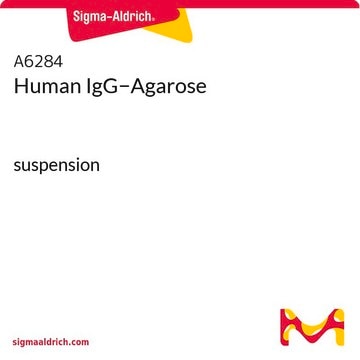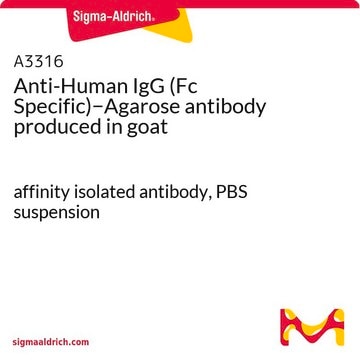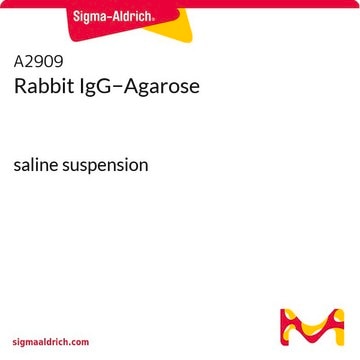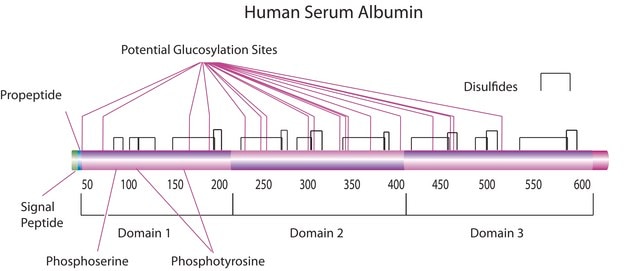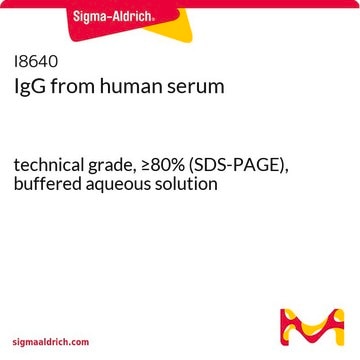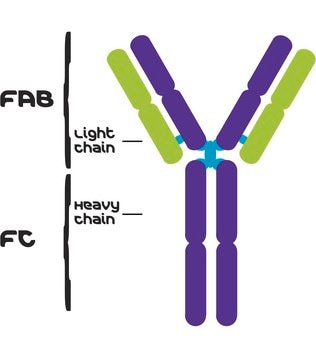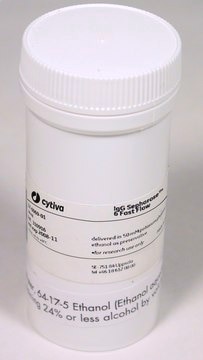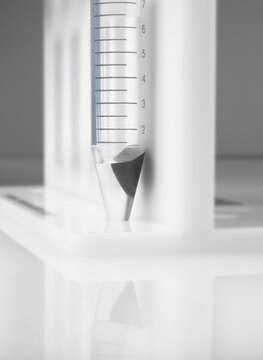A3543
Anti-Human IgG (whole molecule)−Agarose antibody produced in goat
IgG fraction of antiserum, PBS suspension
Sign Into View Organizational & Contract Pricing
All Photos(1)
About This Item
Recommended Products
biological source
goat
Quality Level
conjugate
agarose conjugate
antibody form
IgG fraction of antiserum
antibody product type
secondary antibodies
clone
polyclonal
form
PBS suspension
species reactivity
human
extent of labeling
~2.4 mg Ab per mL
technique(s)
immunoelectrophoresis: suitable
capacity
1 mg/mL binding capacity
storage temp.
2-8°C
target post-translational modification
unmodified
Related Categories
General description
IgG antibody subtype is the most abundant serum immunoglobulins of the immune system. It is secreted by B cells and is found in blood and extracellular fluids and provides protection from infections caused by bacteria, fungi and viruses. Maternal IgG is transferred to fetus through the placenta that is vital for immune defence of the neonate against infections.
Specificity
Anti-human IgG recognizes human IgG (whole molecules). Goat anti-human is purified by ion exchange chromatography and then covalently bound to agarose.
Immunogen
Pooled normal human serum
Application
Anti-human IgG (whole molecule) is suitable for immunoelectrophoresis. Antibody depletion from normal human serum was carried out by treating diluted serum with 50 microl of agarose-linked goat anti-human IgG (A3543) for 90 minutes at 4 °.
Antibody depletion from normal human serum was carried out by treating diluted serum with 50 μl of agarose-linked goat anti-human IgG (A3543) for 90 minutes at 4 degrees.
Biochem/physiol Actions
IgG stimulates the classical pathway of the complement system. It neutralizes virus particles and toxins. IgG plays a crucial role in antibody-dependent cell-mediated cytotoxicity (ADCC). IgG might be associated with allergy. It has the longest serum half life.. Maternal IgG is transferred to fetus through the placenta that is vital for immune defence of the neonate against infections.
Physical form
Suspension in 0.01 M phosphate buffered saline, pH 7.4, containing 15 mM sodium azide
Disclaimer
Unless otherwise stated in our catalog or other company documentation accompanying the product(s), our products are intended for research use only and are not to be used for any other purpose, which includes but is not limited to, unauthorized commercial uses, in vitro diagnostic uses, ex vivo or in vivo therapeutic uses or any type of consumption or application to humans or animals.
Not finding the right product?
Try our Product Selector Tool.
wgk_germany
nwg
flash_point_f
Not applicable
flash_point_c
Not applicable
Certificates of Analysis (COA)
Search for Certificates of Analysis (COA) by entering the products Lot/Batch Number. Lot and Batch Numbers can be found on a product’s label following the words ‘Lot’ or ‘Batch’.
Already Own This Product?
Find documentation for the products that you have recently purchased in the Document Library.
T A Brighton et al.
The Biochemical journal, 340 ( Pt 1), 59-67 (1999-05-07)
Considerable interest is currently focused on the interactions of beta-2 glycoprotein I (beta2GPI) and anti-phospholipid antibodies with anionic phospholipids in an attempt to understand the association between these antibodies and clinical diseases such as thrombosis. The interactions of beta2GPI and
J Raper et al.
Infection and immunity, 67(4), 1910-1916 (1999-03-20)
Natural resistance of humans to the cattle pathogen Trypanosoma brucei brucei has been attributed to the presence in human serum of nonimmune factors that lyse the parasite. Normal human serum contains two trypanosome lytic factors (TLFs). TLF1 is a 500-kDa
A revised nomenclature for allergy: an EAACI position statement from the EAACI nomenclature task force
Johansson SGO, et al.
Allergy, 56(9), 813-824 (2001)
Placental transfer of IgG subclasses in a Japanese population.
Hashira S, et al.
Pediatrics International, 42(4) (2000)
Structure and function of immunoglobulins.
Schroeder Jr H W and Cavacini L
The Journal of Allergy and Clinical Immunology, 125(2), S41-S52 (2010)
Our team of scientists has experience in all areas of research including Life Science, Material Science, Chemical Synthesis, Chromatography, Analytical and many others.
Contact Technical Service